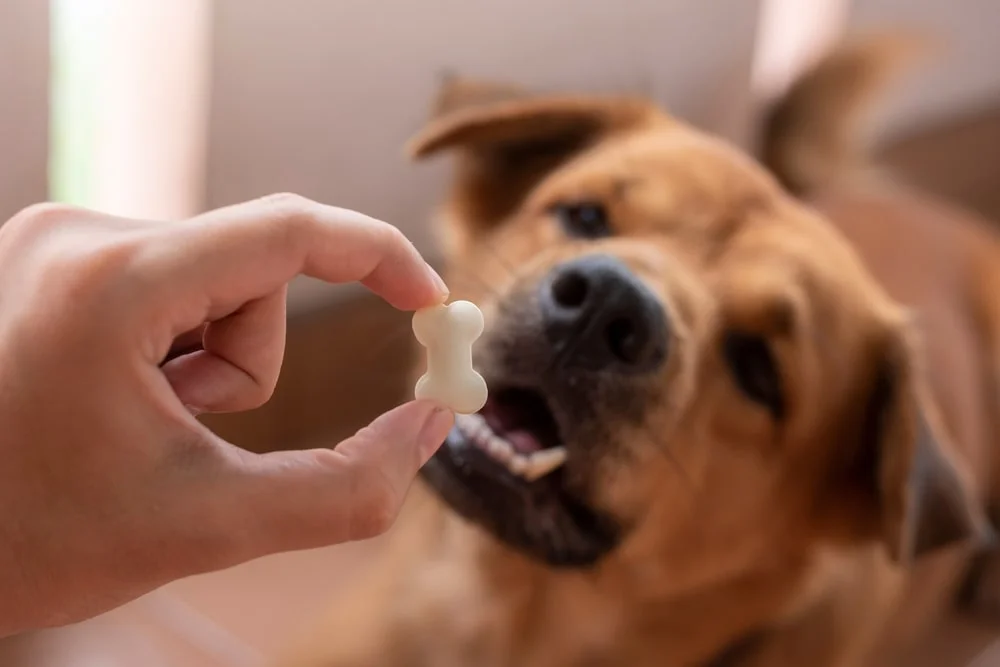PET CARE
The Ultimate Guide to Dog Food: Nutrition, Treats, and More
When it comes to food, most dogs aren’t picky. If they can get it in their mouth, they’ll at least try to eat it. But for owners, it can still be difficult to figure out what type of dog food our pups should eat. Let’s take a closer look at the importance of dog nutrition.
The Basics of Dog Nutrition
You might think of your pooch exclusively as a meat eater, but the truth is more complex. While they are technically carnivores, they need some nutrients that are more easily obtained from plants. This makes them omnivores.1 Their digestive systems evolved over millions of years to digest carbohydrates as well as fats and proteins. Millennia of cohabitation with humans means dogs are also able to digest complex carbohydrates, like grains and potatoes. Cooked complex carbohydrates are even easier for them to digest — another result of their time spent with us.
When it comes to the specific nutritional requirements of dogs, there are six basic categories:
● Water
● Fats
● Protein
● Carbohydrates
● Vitamins
● Minerals
Where your dog gets these nutrients is less important than their quality. That means your pup could enjoy a high-quality, well-balanced vegetarian diet. Just be sure to consult your veterinarian for their approval and their help with designing a healthy diet.
Learn More About Dog Nutrition:
The Basics of Dog Food
Knowing which nutrients your dog needs can help you make informed purchases when it comes to buying dog food. With so many options to choose from, however, finding the right food can still feel overwhelming.
Asking your vet is the best place to start. They can help you decipher the ingredients listed on dog food and provide some recommendations. Your vet can also help you customize your dog’s diet based on their breed and life-stage.
Here are some basic tips to get started:
● Look for high-quality ingredients. Food packed with chemical ingredients isn’t going to be the best choice for your pup. Look for components you recognize, such as poultry, beef, potatoes, and rice.
● Pay attention to the order of ingredients. Pet food ingredients are listed by weight. The higher they are on the list, the more of that ingredient there is in the food. Keep in mind that ingredients are weighed before the food is processed. When it comes to kibble, a lot of water is lost as the food is processed. So, a dry food with meat as one of the first ingredients might not be as nutritious as it seems.
● Favor low-calorie foods. If your pup spends most of their time indoors, their energy requirements are low. Feeding them low-calorie food can help prevent them from putting on too many pounds. It also means more food in your dog’s bowl, which makes for a more satisfying meal!
How much food should I feed my dog?
This is one part of your dog’s diet that is actually easy to figure out! Simply use this handy formula to get started:1
(30 x your dog’s weight in kg) + 70 = Daily caloric needs
If you’d prefer to measure your dog’s weight in pounds, use this formula instead:1
(30 x [your dog’s weight in lbs divided by 2.2]) + 70 = Daily caloric needs
Keep in mind that this formula is for an “average” adult dog. Your pooch will almost certainly deviate in myriad ways. Your veterinarian can help you customize your dog’s caloric intake by their lifestyle and body condition.
Learn More About Dog Food:
The Basics of Dog Treats
No dog diet would be complete without treats! It’s recommended you limit treats to no more than 10% of your dog’s daily caloric intake.2 This can be given all at once or in smaller quantities throughout the day.
When it comes to deciding what type of treats your dog should eat, follow the same basic rules of dog nutrition. High-quality treats with whole ingredients are best. Avoid anything with lots of filler or unrecognizable components.
Ask your vet before giving your dog “people food.” While plenty of fruits and vegetables are safe for your pooch, introducing new foods to your dog’s diet always comes with risks. There are also some foods that should be avoided entirely, including:
● Onions
● Garlic
● Grapes (including raisins)
Learn More About Dog Treats
● Treats for Dogs
● Healthy Homemade Dog Treats Recipes
● Treats That Clean Your Dog’s Mouth
● Calming Treats for Dogs
What’s on the Menu?
Finding the best food for your dog may seem complicated, but all it takes is a little research. This guide should help you get started. The next step is to get your vet’s help with formulating the perfect diet for your pooch.
Good food is important, but it’s just one way to keep your dog happy and healthy. Regular check-ups, grooming, and dental cleaning are essential to giving your dog the best life possible. Depending on your dog’s age and breed, you could end up spending thousands of dollars per year — and that’s not including unexpected health emergencies.2
Chow Down on Savings With Pet Insurance
When unexpected health conditions arise, the thousands of dollars you might spend per year on regular care for your dog could grow to even more. By enrolling your dog in a MetLife Pet Insurance policy, you can get coverage for surprise vet expenses. And with our optional Preventive Care plan, you can get money back on covered routine veterinary care — helping you save more money. Explore our plans and pricing options by getting a free quote for your pup today.


